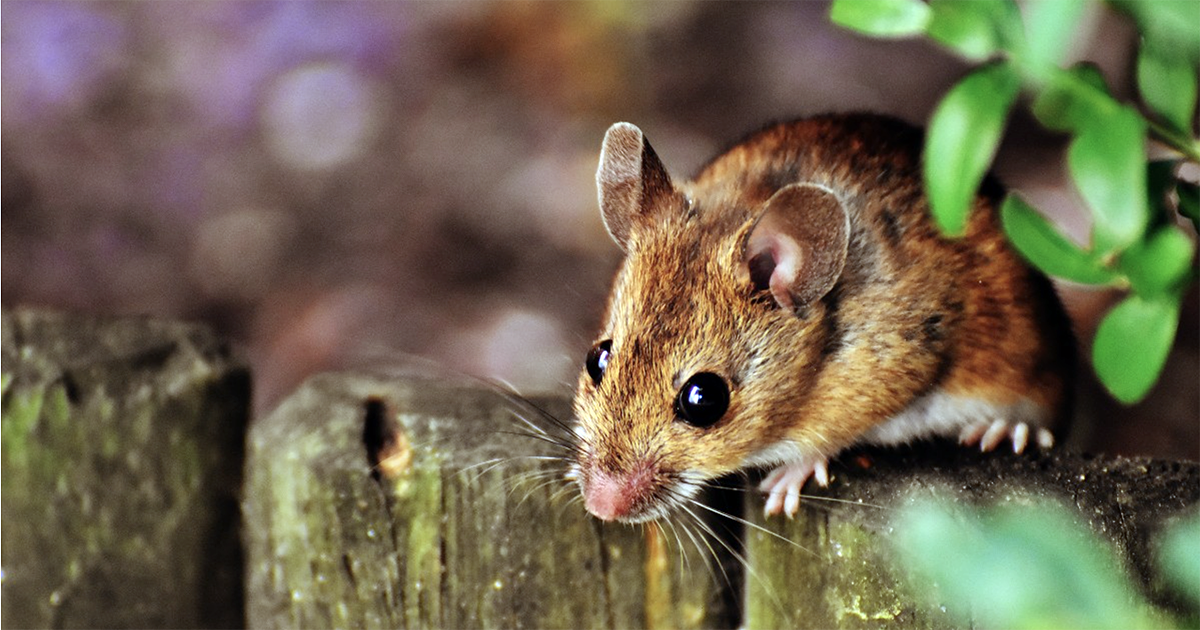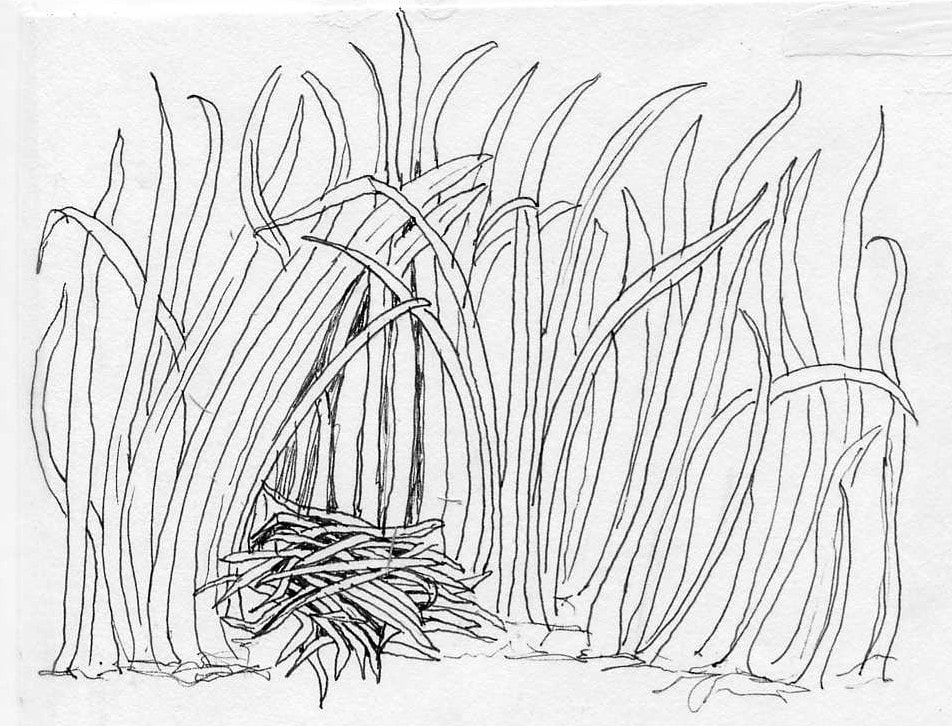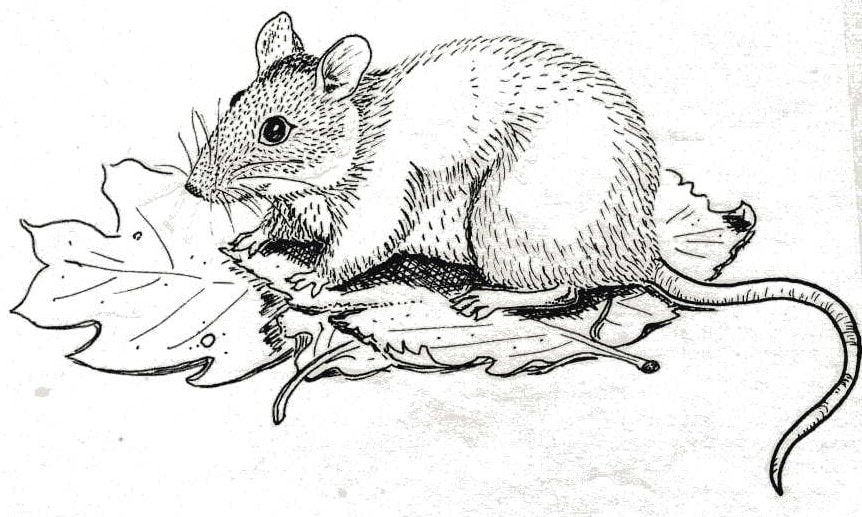A local naturalist and zen explorer experiments with ways to consider the world from another living creature's perspective - and discovers a new way of seeing.
- by James Inabinet, PhD, illustrations by Margaret Inabinet
Mouse-seeing is an innocent way of seeing that begins with an empty mind, a “beginner’s mind,” one open to anything as Zen master Suzuki describes: “In the beginner’s mind there are many possibilities; in the expert’s mind there are few.”
To begin mouse-seeing, thinking is suspended through meditation or prayer. A quieted mind allows the “seer” to become more mindful of what’s happening right now, right here. With an empty mind one becomes like a hollow bone, ready to be filled with possibility. Several years ago, I ritually began my first journey into mouse-seeing in the goldenrod field. After sitting in meditation for a while, I dropped down and put my nose close to the ground like a mouse to see the field up close the way she would. I could see thickets of grass and goldenrod stems. With lowered head, I crawled for a while seeking mouse roads below the grass and goldenrod “canopy” and experience being in mouse habitat as I moved mouse-like through the field. After a half hour or so, I became bored and noticed that I had been thinking about home and work. I meditated and began again. Soon I stumbled onto what appeared to be a tiny trail. I slid onto my belly to look closer and discovered a mouse trail, a round hole through grass “trunks.” Opening back into the grass, the trail disappeared in shadow. Perhaps a tiny nest was back in there but I would never know. To get close enough to gaze at it would certainly destroy it.
I turned away and crawled towards the early sun. It struck me that humans are upright strangers that blithely walk through woods and fields as hawks, seeing from afar, from on high. We rarely see a mouse or even her signs and yet mice are legion, numbering in the thousands in this place alone. There on mouse roads they run, doing the doings of mice everyday unnoticed until someone gets down on her belly and looks with mouse eyes. Only then can mice and their way of being truly begin to exist for us.
As infants, we once possessed unmitigated body-knowing, as innocent as a mouse on her mouse-road – I only have to remember how to do it. Maybe I can return somehow to an infant’s sense of wonder, alert and curious – like a mouse. Intimate with her world, she sees clearly only what is right in front of her feeling, smelling nose. I moved closer to the stems of the grasses and goldenrods; I touched them with my face, feeling their roughness. Nose to the ground, I smelled the dark, damp earth where it was exposed. I listened closely while simultaneously smelling, feeling, looking. The mouse way is a doing way.
Energetically, I moved through the field, stopping only for brief moments. I alternately blurred my vision and then focused. In blurring, movement can be detected, vital in a mouse world that includes hawk shadows and snakes. With blurred images, one feels more than sees. Blurring interdicts thinking.
With closed eyes I laid down and focused on feelings. A surprisingly rough grass stem was touching my face. I tried to move into that feeling of roughness–without thinking. Moving my face to the side, I felt the mat of dry grass that covered the bare earth, again focusing on feelings. Moving forward a few inches I felt a grass stem on my forehead, focusing on feelings even as an image appeared, an image of what that grass might look like. I continued in this way for about an hour and had moved only about six feet. At the end of this experiment into mouse-seeing, I knew that particular feelings had arisen in me about the nature of the beings of the field, but I could not clearly recall them. It occurred to me that by purposefully suspending thinking, these feelings could not easily become thought and/or words. Something, though, was felt, something known, but I could not say exactly what it was. Even so, my relationship with this place deepened. Comments are closed.
|
Categories
All
Archives
July 2024
|
Shoofly Magazine Partners
Our Shoofly Partners are local businesses and organizations who share our mission to enrich community life in Bay St. Louis, Waveland, Diamondhead and Pass Christian. These are limited in number to maximize visibility. Email us now to become a Shoofly Partner!
































 RSS Feed
RSS Feed























